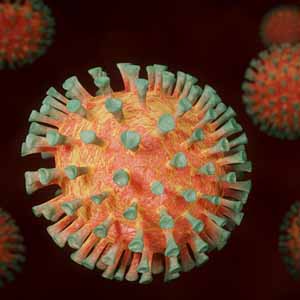Long-term outcomes of different rehabilitation programs in patients with long COVID syndrome: a cohort prospective study

Accepted: 20 January 2023
HTML: 8
All claims expressed in this article are solely those of the authors and do not necessarily represent those of their affiliated organizations, or those of the publisher, the editors and the reviewers. Any product that may be evaluated in this article or claim that may be made by its manufacturer is not guaranteed or endorsed by the publisher.
Authors
After the resolution of the acute SARS-COV-2 infection, an important percentage of patients do not fully recover and continue to present several symptoms. Nevertheless, there is a lack of data in the literature on the effects of rehabilitation programs on medium- and long-term long COVID symptoms. Therefore, the aim of this study was to evaluate the long-term outcomes after rehabilitation programs in long COVID syndrome patients. A prospective cohort study was conducted from August 2021 to March 2022, involving 113 patients with long COVID syndrome. The patients in the experimental group (EG, n=25) received a tailored and multidisciplinary rehabilitative program, involving aquatic exercises, respiratory and motor exercises, social integration training and neuropsychologic sessions, LASER therapy and magnetotherapy. Patients in the other three comparison groups received eastern medicine techniques (CG1), balneotherapy and physiotherapy (group CG2), self-training and home-based physical exercise (CG3). Once the several rehabilitation protocols had been performed, a structured telephone contact was made with the patients after 6 months ± 7 days from the end of the rehabilitation treatment, in order to record the frequency of hospital ad-missions due to exacerbation of post-exacerbation syndrome, death or disability, and the need for other types of care or drugs. The patients in the comparison groups were more likely to request therapeutic care for emerging long COVID symptoms (χ2=6.635, p=0.001; χ2=13.463, p=0.001; χ2=10.949, p=0.001, respectively), as well as more likely to be hospitalized (χ2=5.357, p=0.021; χ2=0.125, p=0.724; χ2=0.856, p=0.355, respectively) when compared to the patients of the EG. The relative risk (RR) of hospital admissions in the observed cohort was 0.143 ±1,031 (СI: 0.019; 1.078); 0.580±1,194 (CI: 0.056; 6.022); 0,340±1,087 (CI: 0.040; 2.860). The RR of hospital admissions for patients with long COVID syndrome was reduced by 85.7%; 42.0% and 66.0%, respectively, when the experimental rehabilitation technique was employed. In conclusion, a tailored and multidisciplinary rehabilitative program seems to have a better preventive effect not only in the short term, but also over the next 6 months, avoiding the new onset of disabilities and the use of medicines and specialist advice, than other rehabilitative programs. Future studies will need to further investigate these aspects to identify the best rehabilitation therapy, also in terms of cost-effectiveness, for these patients.
How to Cite

This work is licensed under a Creative Commons Attribution-NonCommercial 4.0 International License.
PAGEPress has chosen to apply the Creative Commons Attribution NonCommercial 4.0 International License (CC BY-NC 4.0) to all manuscripts to be published.
Similar Articles
- Nicola Manocchio, Isabella Iovene, Antonio Santoro, Maria Chiara Maccarone, Calogero Foti, Report and Abstracts of the 15th Congress of the Mediterranean Forum of Physical and Rehabilitation Medicine: Rome, July 6-8, 2023 , European Journal of Translational Myology: Vol. 33 No. 4 (2023)
You may also start an advanced similarity search for this article.

 https://doi.org/10.4081/ejtm.2023.11063
https://doi.org/10.4081/ejtm.2023.11063



